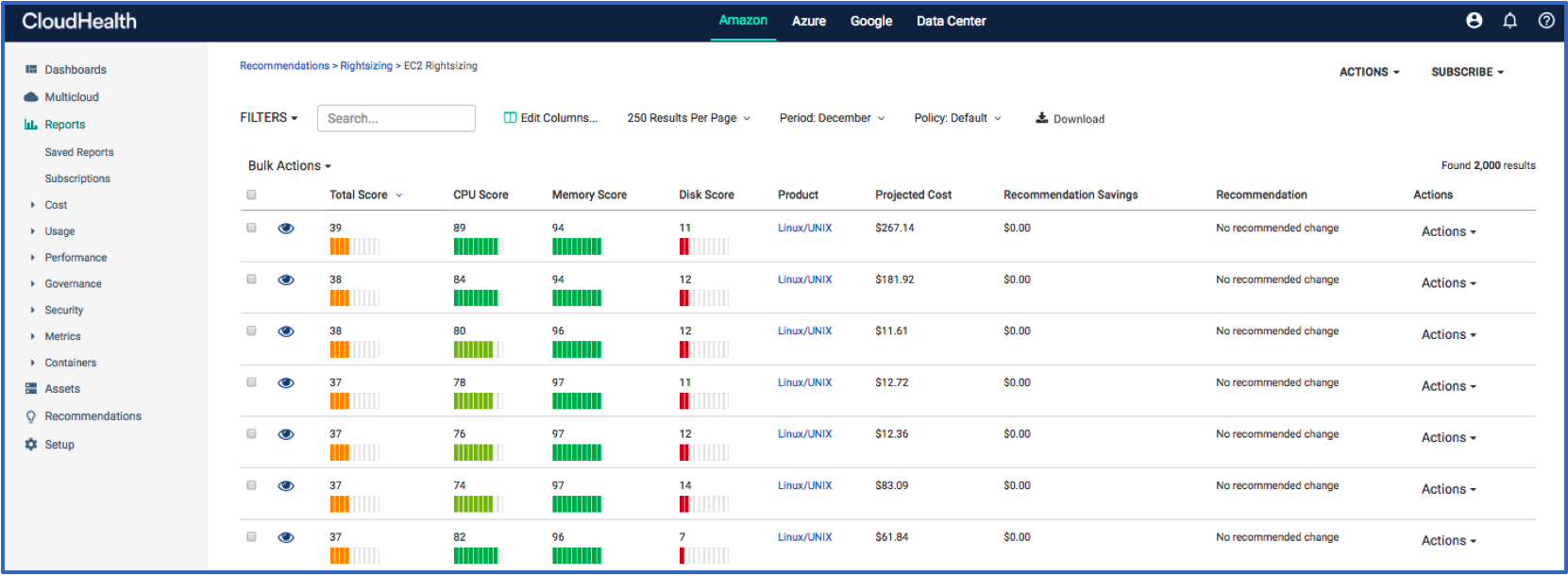I am pleased to announce that the CloudHealth cloud cost and governance management platform is integrating with the Wavefront cloud analytics and monitoring platform. Through this integration, CloudHealth customers can access their Wavefront cloud performance metrics via their CloudHealth platform for rightsizing and performance optimization.
As enterprises are adopting more public cloud services, they are often surprised by growing, instead of shrinking expenses. As a result, insight into cloud cost ROI is essential to make proper business decisions. In addition to making your multi-cloud costs visible, CloudHealth models, validates and manages your cloud instance reservations. Out-of-the-box, CloudHealth analyzes native metrics from cloud providers, but in many cases that is not enough for a 360 view. By using CloudHealth and Wavefront together, CloudHealth takes advantage of Wavefront’s vast real-time, highly granular, multi-cloud (AWS, Azure, GCP) infrastructure usage metrics, and provides effective recommendations for cost savings of your service. To find out more, also read CloudHealth’s Integration with Wavefront blog.
Wavefront and CloudHealth for Optimized Performance and Simplified Rightsizing
After you have set up your cloud account, CloudHealth will:
- Build your complete asset list.
- Compare your asset list with the list of AWS, Azure and GCP hosts.
- Extract tag-enriched usage data from cloud providers, via the Wavefront integration.
- Provide rightsizing recommendations for your over-provisioned or underutilized assets using the recommendation engine (see Figure 1).
 Figure 1. Rightsizing report for EC2 instances
Figure 1. Rightsizing report for EC2 instances
CloudHealth integrates unique CPU, memory, network in/out and disk I/O resource usage requirements within your ecosystem into resource optimization recommendations. If your service is memory constrained, CloudHealth might recommend keeping the high memory instance with low CPU and disk usage that otherwise would be cost-effective to downsize, if not terminate (see Figure 2).
 Figure 2. No recommendation since EC2 instance usage is memory constrained
Figure 2. No recommendation since EC2 instance usage is memory constrained
Next, CloudHealth shows a list of savings if you follow the recommendation, also providing you a security risk summary through its Health Check report (see Figure 3).
 Figure 3. Operational monthly savings and security risk exposure report
Figure 3. Operational monthly savings and security risk exposure report
After reviewing the CloudHealth recommendations, you can take appropriate action to correctly size your service and then set up policies to automatically alert you if assets become underutilized in the future. For example, by downsizing underutilized instances and terminating zombie instances, you can save time and money without interruption to your service.
CloudHealth can also give you cost trends across different environments and microservices (Figure 4) and can help you see which clusters are more expensive. This can be done for logical business groupings (e.g. lines of business, environments, clusters, applications, users, etc). With that information, SREs can log into Wavefront and drill down to find the root cause of an expensive cluster. As a result, SREs can further optimize service performance and save money.
 Figure 4. Cost trending by service category
Figure 4. Cost trending by service category
Intuit Saves Millions Using CloudHealth and Wavefront
After evaluating multiple tool vendors for their cloud adoption transformation, Intuit chose CloudHealth for true cloud cost management and Wavefront for real-time performance monitoring, based on advanced streaming analytics. Intuit integrates Wavefront and CloudHealth through the CloudHealth API, feeding Wavefront’s tag-enriched resource usage data into CloudHealth’s cloud cost-savings recommendations, saving millions of cloud cost dollars annually. Using rightsizing analysis, Intuit was able to move over half of its workloads to run smaller EC2 instances, saving them over $100,000 a year.
Intuit also forwards aggregated CloudHealth cost metrics to Wavefront for correlated monitoring and analytics-driven alerting. Specifically, Intuit uses the Wavefront powerful alerting engine to alert on cloud budget overruns.
To learn more about how you can benefit from the CloudHealth and Wavefront integration, check out the CloudHealth blog and visit www.cloudhealthtech.com. You can also try Wavefront for free by signing up for a trial.
Get Started with Wavefront Follow @nesgor Follow @WavefrontHQ
The post Optimize Both Your Service Performance and Cloud Costs with CloudHealth and Wavefront appeared first on Wavefront by VMware.






